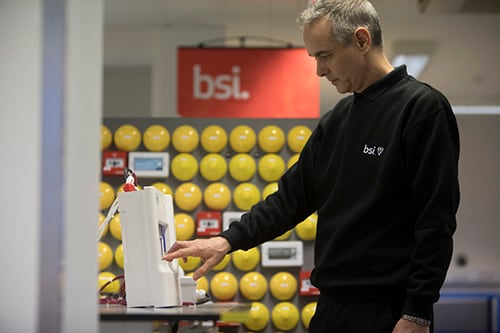Commercial fire alarm systems
The main purposes of any fire detection and alarm system is to protect life by providing a reliable means of alerting the occupants of a building to an early indication of fire. It is therefore critical that they work as they should, on the rare occasion they may be needed.
At our test laboratories in Hemel Hempstead our experienced engineers will spend hours subjecting manual call points, automatic detectors, control indicating equipment, fire alarm sounders and many other devices to a series of tests in accordance with BS EN 54. For example an automatic smoke detector will be tested to ensure it meets the requirements of BS EN 54-7, manual call points to BS EN 54-11 and Control and indicating equipment to BS EN 54-2.

An automatic smoke detector may have been certified as working to BS EN 54-7 but if this smoke detector is poorly installed it may not work as expected or cause false/unwanted alarms, so as equally important as ensuring the product you are using has been certified, is to ensure the company responsible for the design, installation, commissioning and maintenance of the fire alarm system can carry out the work correctly.
BS 5839-1, the code of practice for design, installation, commissioning and maintenance of systems in non-domestic premises, recommends the use of components, such as manual call points, automatic detectors, control and indicating equipment, fire alarm sounders comply with the relevant product standards for these devices. It also recommends the fire alarm systems are designed, installed, commissioned and maintained by competent persons.
How do you know the company you are using to either install or maintain your fire detection and alarm system is competent?
The Kitemark Scheme for fire alarm installations is a third party certificate scheme for companies involved in the design, installation, commissioning and maintenance of fire alarm systems. Companies who achieve the Kitemark will also become registered on the BAFE SP203-1 scheme and will undergo a series of regular audits, this will include:
-
Review of the design records to ensure they meets the requirements of BS 5839-1 Section 2 and Section 3 false alarms
-
Inspections will be completed to ensure the fire detection and alarm system has been installed to the requirements of BS 5839-1 Section 4
-
Random tests on manual call points, automatic detectors and sounders will be completed on the installed system commissioned to the BS 5839-1 Section 5
-
The maintenance of systems will be witnessed to ensure the system is maintained to BS 5839-1 Section 6
-
A review of operating procedures to ensure the organization meets the requirements of the BAFE SP203-1 scheme
Using a Kitemark certified and BAFE SP203-1 registered company will go a long way to insuring you have a reliable fire detection and alarm system, which has been designed, installed, commissioned and is being maintained by a professional and competent company.
